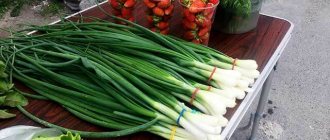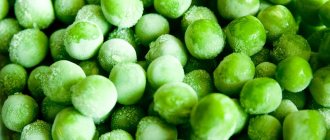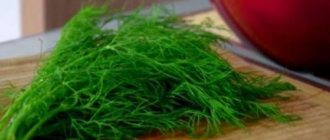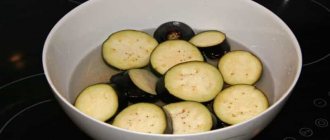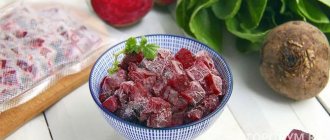What are the benefits of arugula?
Before you start harvesting the plant, it is worth studying the beneficial properties of the crop.
The plant includes:
- Microelements:
- copper;
- phosphorus;
- manganese;
- selenium;
- zinc.
- Macronutrients:
- calcium;
- magnesium;
- potassium;
- phosphorus;
- sodium.
- Vitamin complex: A, C, E, K, group B.
During the Roman Empire, the plant was considered a natural aphrodisiac. Due to the significant content of the above elements, the plant is considered a natural energy drink that increases performance. The culture is also saturated with iodine, which is important for residents of cities remote from the sea.
In addition, it is recommended to include the plant in food for:
- increasing hemoglobin levels;
- lowering cholesterol;
- improved digestion;
- combating cancer;
- normalization of water-salt balance;
- strengthening the nervous and cardiovascular system.
It is recommended to consume this beneficial herb for diabetes mellitus, kidney and urinary tract diseases, and for lactating women. Arugula is also low in calories and is an essential ingredient in many diets.
Compound
It should be noted that this plant is an excellent source of many beneficial substances. It is rich in many vitamins and microelements. It contains a sufficient amount of zinc, magnesium, sodium, selenium, phosphorus and manganese. Those who are trying to understand the benefits of arugula will be interested in the fact that it contains a small amount of iron.
The plant is also rich in vitamins B, E, C, A and K. It contains tocopherol, phylloquinone, iodine and calcium. It should be noted that with such a unique composition, one hundred grams of this product contains only 25 kilocalories.
Storage Features
Having studied the benefits and possible harms of consuming the plant, the question arises: is it possible to harvest the healthiest arugula for future use? It is necessary to harvest grass. The main thing is to take into account several features of harvesting and storing the plant:
- You should not immediately purchase a large number of green bunches;
- freshly cut or purchased grass must be used immediately or stored in compliance with all requirements for no more than 4 days so that it does not have time to deteriorate;
- if you wrap the “tails” with cling film, you can increase the shelf life of fresh herbs by several days;
- store herbs on the bottom shelf of the refrigerator;
- It is optimal to place the bundles inside plastic or glass containers. In this way, the required temperature is achieved - 8-9 degrees;
- storage containers must be hermetically sealed with lids, as the grass quickly becomes saturated with other odors.
Video
To understand in more detail how to properly store arugula for the winter, watch the video:
Young mother, wife and housewife. She prepares delicious and, most importantly, healthy meals for her household. Therefore, he is looking for and testing various options for preserving the beneficial properties of fruits and vegetables at home. I am ready to share the experience gained and the results of experiments with readers.
Found a mistake? Select the text with the mouse and click:
It is believed that some vegetables and fruits (cucumbers, stem celery, all varieties of cabbage, peppers, apples) have “negative calorie content,” that is, more calories are consumed during digestion than they contain. In fact, only 10-20% of the calories received from food are consumed in the digestive process.
A new product from American developers is the Tertill robot, which weeds weeds in the garden. The device was invented under the leadership of John Downes (creator of the robot vacuum cleaner) and works autonomously in all weather conditions, moving over uneven surfaces on wheels. At the same time, it cuts off all plants below 3 cm with the built-in trimmer.
From varietal tomatoes you can get “your own” seeds for sowing next year (if you really like the variety). But it is useless to do this with hybrids: you will get seeds, but they will carry the hereditary material not of the plant from which they were taken, but of its numerous “ancestors”.
Top articles: Carrot juice: features of intake, storage, benefits and harm
Humus is rotted manure or bird droppings. It is prepared like this: the manure is piled up in a heap or pile, layered with sawdust, peat and garden soil. The pile is covered with film to stabilize temperature and humidity (this is necessary to increase the activity of microorganisms). The fertilizer “ripens” within 2-5 years, depending on external conditions and the composition of the feedstock. The output is a loose, homogeneous mass with a pleasant smell of fresh earth.
In Australia, scientists have begun experiments in cloning several varieties of grapes grown in cold regions. Climate warming, which is predicted for the next 50 years, will lead to their disappearance. Australian varieties have excellent characteristics for winemaking and are not susceptible to diseases common in Europe and America.
The homeland of pepper is America, but the main breeding work on developing sweet varieties was carried out, in particular, by Ferenc Horvath (Hungary) in the 20s. XX century in Europe, mainly in the Balkans. Pepper came to Russia from Bulgaria, which is why it received its usual name - “Bulgarian”.
Natural toxins are found in many plants; Those grown in gardens and vegetable gardens are no exception. Thus, the seeds of apples, apricots, and peaches contain hydrocyanic acid, and the tops and peels of unripe nightshades (potatoes, eggplants, tomatoes) contain solanine. But do not be afraid: their number is too small.
Convenient Android applications have been developed to help gardeners and gardeners. First of all, these are sowing (lunar, flower, etc.) calendars, thematic magazines, and collections of useful tips. With their help, you can choose a day favorable for planting each type of plant, determine the timing of their ripening and harvest on time.
Oklahoma farmer Carl Burns developed an unusual variety of multi-colored corn called Rainbow Corn. The grains on each cob are of different colors and shades: brown, pink, purple, blue, green, etc. This result was achieved through many years of selecting the most colored ordinary varieties and crossing them.
How to preserve arugula for the winter - ways
There are many ways to harvest healthy herbs, and each of them has its own advantages, features, and nuances. In this case, you can immediately select several storage options. For example, prepare one bunch with the addition of salt, dry the second, and freeze the third.
Regardless of whether arugula is stored dried or frozen, you should not use the product for food after a year.
How to store fresh arugula
The most convenient way to store fresh arugula is to place freshly cut bunches in small vases with water. Such preparations look impressive and allow you to preserve fresh green bunches for up to 5 days. You can extend the shelf life of the herb to 10 days by placing it in vases in the refrigerator.
But to enjoy always fresh and fragrant herbs, it is better to grow the crop in pots on the windowsill. Any soil is suitable for growing, and seeds can be easily selected in stores. In addition, the plant does not require special care, except for additional lighting in winter.
See also
7 best ways to properly freeze currants at home
Read
Long-term storage of arugula
To ensure that the herb does not lose its beneficial properties over a long period of time, it must be properly prepared. The fastest and easiest option is freezing, a longer but reliable option is drying. But to keep the weed fresh for a long time, you can use the salt storage method as a basis.
Interesting! As a crop, arugula began to be grown about a hundred years ago. Before this, we collected the most useful leaves from a wild plant.
Storing arugula with salt
Using a simple pickling method, you can keep the herb fresh and spicy for six months. To do this you need to follow simple recommendations:
- Select freshly picked, green, young leaves.
- Rinse the greens under running water and place in a colander.
- Dry on cotton towels.
- Chop the arugula in a convenient way for later use.
- Pack the greens tightly into a glass jar, adding salt. Salt will need 1 tablespoon for every 100 grams of product.
- Tightly and securely screw the lid on the jar with the blank and transfer it to the refrigerator, cool cellar or pantry.
In this way, the plant will retain the maximum amount of nutrients, but the taste of the herb will change slightly.
Drying
Many housewives call drying the best way to prepare spices. Dried herbs cannot be added to a salad, but the herb is suitable as a spice for meat or fish dishes. You can dry the grass in several ways, discussed below. But it is important, at the end of the process itself, to pour the greens into a glass jar and seal it with a lid. To prevent dried arugula from spoiling, place a small cloth bag with salt inside the jar.
The natural way
To prepare arugula using the proposed method, you need to perform the following manipulations:
- Wash, sort and dry the greens.
- Chop the leaves.
Grass, when in contact with metal, tends to oxidize. Therefore, it is better not to use a knife or scissors for slicing, but to chop the greens with your hands.
- Wrap the baking sheet with parchment. Spread the herbs evenly in one layer on the baking sheet.
- Move the grass to a warm place, protected from direct sunlight.
- Dry the arugula for six to seven days, turning occasionally on the baking sheet.
- Pack the greens into jars.
Store the product for one year in a cool, dark place.
In the dryer
Using a special device for drying vegetables and fruits - an electric dryer, you can very quickly and conveniently prepare arugula for the winter. In addition, the plant will retain most of its healing properties.
You can make a blank in the following way:
- Prepare sorted, washed and dried leaves.
- Place the herb in the drying compartment.
- Set the appropriate mode. Some models are equipped with a special program for drying greens. The drying temperature should be 50 degrees. The duration of the process is 12 hours.
- During the drying process, the volume of greens will decrease by 12 times. Two kilograms of fresh herbs will yield only 162 grams of dried product.
- Transfer the herb into jars or fabric bags and store.
In the oven
You can dry greens in another simple way - in the oven. For this:
- Wash the leaves well and place them on a sieve. Blot the grass with a towel to remove excess moisture.
- Tear with your hands or cut into large sheets.
- Heat the oven to 40 degrees. Cover a baking sheet with parchment.
- Spread the greens onto the baking sheet in an even layer.
- Dry the workpiece and transfer it to containers for storing spices.
In this way, the time for preparing spices is halved compared to using an electric dryer.
In its purest form
Quick drying is necessary if the greens will be used for food within 4-5 days. To do this, the grass is washed thoroughly under running water, then torn into small pieces and laid out on towels (paper or cotton). After 30-40 minutes, when there are no drops of water left on the leaves, you can pack the green bunches into sealed bags. Store the preparation in the refrigerator.
Preparing for freezing
Freezing is the best way to extend the shelf life of medicinal herbs. How to prepare arugula leaves:
- Choose only healthy arugula leaves, without spots, preferably medium size.
- Be sure to rinse the greens from dust and dirt in warm water.
- Dry the arugula thoroughly before freezing. To speed up the process, place the leaves on a napkin or towel to absorb moisture. Excess water forms a coating of ice, and this spoils the appearance and taste of frozen arugula and other types of greens.
Advice If you grow arugula yourself in the garden, then collect the leaves for harvesting early in the morning, before the sun's rays hit them. These greens are the crunchiest, tartest and healthiest.
Preparing arugula in jars
Greens prepared in jars will fit even in the smallest kitchen. Having packaged dried arugula in glass containers, it is very convenient to put the preparations on the shelf with spices and use as needed. Fresh herbs with salt in jars can be placed in the refrigerator.
Freezing
When choosing ways to harvest healthy herbs for the winter, you should pay attention to freezing. The process itself will take a minimum amount of time, and the greens will retain a large amount of vitamins and minerals. In addition, by properly defrosting arugula, it can be added to salads, first courses, and meat treats.
See also
Recipes on how to properly freeze cauliflower at home for the winter in the freezer
Read
You need to freeze greens as follows:
- Rinse the grass thoroughly, being careful not to damage the leaves.
- Dry the greens on towels. If you do not dry the grass, then the workpiece will subsequently turn into one lump.
- If desired, shred large leaves or leave whole.
- Place the greens in portions into bags. At the same time, press the bags as much as possible to release the air. Plastic containers with a hermetically sealed lid are also suitable for the workpiece.
- Place bags of greens in the freezer. For convenience, harvest the herb in small portions – “at a time”, since the product cannot be re-frozen.
The frozen product can be stored for one year. Greens defrost very quickly. Simply remove the herb from the freezer, quickly chop it and add it to the dish at the end of cooking.
Greens in oil
The method of preparing herbs in oil will appeal to every housewife. After all, the process itself involves only simple ingredients and takes little time. At the same time, the oil will perfectly complement the taste of arugula, making it richer.
You only need to prepare small-sized molds in advance, for example, ice trays or plastic containers. You can take vegetable or butter fat. It is better to give preference to olive oil, because it is the healthiest.
So, to make a tasty and healthy preparation, you need:
- rinse the grass under running water, dry and chop;
- transfer finely chopped arugula into prepared containers, filling a third of the container’s volume with grass;
- pour oil over greens. There is no need to add oil to the brim. As it cools, the fat will expand and take up the rest of the container;
- send the arugula molds for freezing. Store the product for no more than one year.
Pack ice cream cubes in bags or store in molds. You can also remove the mass and cut it into portions, then put it into bags.
In this way it is easy to prepare a mixture of herbs, for example, mix dill, parsley and arugula. Use prepared cubes for salads, soups or fish dishes.
Results
Arugula is a healthy green that is a necessary ingredient in many dishes - appetizers, first and second courses. This herb contains a large amount of substances beneficial to human health, so there is a need to prepare it for the winter. It is impossible to keep greens fresh for a long time - even if each of the conditions is met, the maximum time that freshly cut arugula is suitable is 10 days. To be able to enjoy arugula in winter, it is processed - dried, frozen and pickled. Such preparations retain maximum benefits and do not actually change the taste characteristics of the greens.
Video: Arugula (arugula).//Arugula salad//Preparing for the winter
Arugula (arugula).//Arugula salad//Preparing for the winter
Watch this video on YouTube
Video: Greens for the winter | How to Keep Fresh and Freeze Properly. My proven method!
Greens for the winter | How to Keep Fresh and Freeze Properly. My proven method!
Watch this video on YouTube
Do you want to understand better than others?
- The most popular ways to freeze chanterelles for the winter - Chanterelles have more pronounced taste characteristics when compared with champignons and oyster mushrooms. However, their significant drawback is the limited period...
- How to properly freeze fresh cherries for the winter - Cherries are rarely frozen; most likely, many housewives simply do not know that this berry best retains its beneficial properties in the freezer. This is the optimal…
- How to properly freeze fresh sorrel for the winter: recipes for preparing it at home - The most affordable and easiest way to prepare sorrel for the winter is freezing in the refrigerator. This allows you to preserve the taste and beneficial properties of greens for further…
- How to properly freeze gooseberries for the winter - Gooseberries are a delicious summer berry with a huge amount of valuable microelements and a short shelf life. To preserve the beneficial properties of fruits, housewives recommend freezing them in…
- How to properly freeze cherries for the winter in the refrigerator - The article discusses the rules for storing cherries. It normalizes blood clotting, strengthens the immune system and blood vessels, lowers cholesterol, has a beneficial effect on the circulatory system - and...
How to store arugula in the refrigerator
Only fresh herbs can be stored in the refrigerator compartment for no more than 4-5 days. This way, the leaves will remain green, fragrant and healthy. It is important, during storage, to take into account that the bundles should not come into contact with air or other products. Suitable for storage:
- airtight containers with lids and screws;
- ziplock bags. Pack so that there is no air left inside;
- a small plastic bowl with water in which to place green bunches. In this case, you need to sprinkle the greens generously with water and place a plastic bag on top;
- wrap the plant with parchment, cling film, foil.
Place containers or bags of herbs on the bottom shelf of the refrigerator. The ideal is to buy the amount of herbs that you need for 3 days, and dry or freeze the excess.
Progress of the Poltava battle
On the eve of the battle, Peter I toured all the regiments. His short patriotic appeals to soldiers and officers formed the basis of the famous order, which demanded that soldiers fight not for Peter, but for “Russia and Russian piety...”.
In turn, inspiring the soldiers, Charles 12 announced that tomorrow they would dine in the Russian convoy, where great booty awaited them.
On the night of June 26 at 23:00, Charles 12 ordered to immediately put his entire army on alert. However, due to the disunity of the army, the soldiers were able to cooperate only after 3 hours.
Thus, the Swedish commander was unable to carry out a lightning attack on the enemy camp. This is how the Battle of Poltava began for Karl, which we will now consider in more detail.
How to store arugula in the freezer
The prepared frozen product is stored in the freezer, pre-packaged in bags or containers. The main condition for long-term storage is tightness. This is necessary so that the grass does not absorb the unpleasant odors of raw fish or meat from the freezer compartment.
Before you put the greens away for storage, they must be dried. Excessive moisture can spoil the appearance of greens, disrupt the structure and taste of the product, and reduce the shelf life of the product.
Methods for freezing onions at home
Since large freezers appeared in homes, housewives have appreciated vegetable preparations. Onions can be frozen either in the form of chopped rings or cubes, or in the form of vegetable puree. After freezing, the vegetable does not lose its inherent aroma and taste, but irrevocably loses its elasticity.
Overall
You can freeze whole onions with or without blanching. Blanching is a culinary technique in which peeled vegetables are briefly immersed in boiling water. For small onions, blanching time is three minutes, for large ones - seven minutes. For proper freezing, blanching must warm the onion to the very middle.
Shredded in bags
To freeze a vegetable, you need to chop it. You can chop the onions using a regular knife slicer or place the vegetables in a food processor (blender). At the same time, the housewife needs to remember that thawed onions lose their shape, so after cutting in a food processor, the thawed product may resemble porridge. The slices are placed in plastic zip-up bags (with a zipper) and distributed inside in a thin layer.
Did you know? Onions contain flavonoids, unique compounds that are very beneficial for human health. The vegetable contains the biologically active compound quercetin, which is a powerful antioxidant with anti-cancer and anti-inflammatory effects.
Once frozen, the bag of slices will resemble a thick sheet of cardboard. If there are a lot of bags, they are stacked on top of each other (in a stack) in the freezer. You can also quickly freeze by placing the onion rings on a tray lined with parchment paper and placing them in the freezer. When the slices are frozen, they are packaged in freezer containers with lids or zip-up bags.
Fried
Before freezing, finely chopped onions can be fried until golden brown, that is, they can be caramelized before freezing. Frying is carried out over moderate heat in olive or fresh butter. The finished frying is cooled and packaged in a form for freezing ice. This type of vegetable freezing adds a new touch of flavor to the prepared food.
In ice trays
If the onion has sprouted and become soft, puree it in a blender or food processor with a small amount of olive (refined sunflower) oil. The resulting vegetable puree is placed in a mold for preparing ice cubes. When the onion cubes are frozen, store them in a container with a lid or in a ziplock bag. They are used as a seasoning for soup or sauce.
Important! The method of freezing vegetables in a bottle is also suitable for cutting green onions
In a plastic bottle
You can also freeze onions in liter plastic bottles. In addition to being cheap, such a container is very convenient, since its neck acts as a dispenser and at the same time it closes tightly and hermetically. Only finely chopped slices are suitable for freezing in a bottle; the cut fraction should pass freely through the neck. Under no circumstances should you place vegetables chopped in a blender or food processor into the bottle.
The consistency of such grinding is more like a puree, and under the influence of low temperatures in the bottle you will get an ice monolith, which can only be removed completely and only after cutting the container. Freshly chopped onions cannot be immediately poured into a bottle and placed in the freezer for freezing. Beforehand, the slices are laid out on a tray in a thin layer and lightly frozen (until flowable). After this, the vegetable slices are poured into the neck of the bottle.
Important! Once any vegetables have been frozen, they will no longer be exactly the same as their fresh counterparts. After freezing, their tissues will be soft because the water inside the cells expanded and destroyed them when frozen.
To make it more convenient to pour frozen vegetables inside the bottle container, in the neck area the bottle is wrapped with food foil in the form of a funnel with a wide diameter. The cuttings are poured into this funnel. When filling, leave a few centimeters of free space between the lid and the vegetables, after which the bottle is tightly closed with a lid and placed in the freezer.
Gooseberry jam with lemon - recipes with orange, without cooking
There are few dessert recipes with lemon, but they are all precious! In fact, any jam made from this berry can be called royal. Keep everything you find and carefully preserve.
Gooseberry jam with lemon - classic recipe
Keep the most popular dessert option
Please note that all recipes contain more sugar than berries. This preserves the jam throughout the winter and makes the consistency of the product very thick.
- Berries – 1 kg.
- Sugar – 1.5 kg.
- Lemon – 2 pcs.
Sort the berries, remove the stems, wash, dry, laying them out in an even layer on a paper napkin.
Wash the lemons and puree them using any available method. Since the advent of a blender in the house, I only use it. You can put it through a meat grinder the old fashioned way.
Proceed in the same way with gooseberries, making a puree from them. Combine berry puree with citrus fruits and stir.
Add sugar and let it cook.
Do not leave the stove, stir the contents until the sweetness dissolves.
Wait for the dessert to boil, set aside until the next day. In the morning you will see that the jam has thickened and changed color.
Place the dessert on the stove again, boil, and immediately pour into jars (I recommend using small containers).
Close and store in a cellar or pantry at a low temperature.
Raw gooseberry jam with lemon without cooking
Live jam from ground berries is the best way to preserve the benefits of berries.
- Berries – 1 kg.
- Granulated sugar – 1.5 kg.
- Lemon - a couple.
- Cut off the tails, wash and dry the gooseberries.
- Pour boiling water over lemons.
- Pass the ingredients through a meat grinder.
- Add sugar, stir thoroughly. Let it sit for 4-6 hours. During this time, stir the contents several times to speed up the process of combining the sweetness with the juice.
- Be sure to sterilize storage jars. Fill them, close with sterile lids. Store in the cold.
Gooseberry jam through a meat grinder with lemon and mint
Jelly or jam, call it what you want, but the dessert will turn out incredibly tasty, with a delicate consistency.
- Gooseberries – 1 kg.
- Granulated sugar – 800 gr.
- Lemon – ½ part.
- Confiturka (gelling sugar) – 20 gr.
- Lemon balm - 3 sprigs.
- Sort the berries, removing spoiled, wrinkled, and unripe ones. Remove the tails. Rinse and dry, spreading in a layer on a paper towel.
- Grind the gooseberries into puree through a meat grinder. Nowadays, housewives often make preparations using a blender or food processor.
- Place on the stove. Bring to a boil over low heat. heat contents slowly until boiling. If foam appears, remove it. Don't forget to stir.
- Add lemon cut into pieces and add mint leaves. Immediately add sugar and confiture.
- When the first signs of boiling appear, boil for 5 minutes and turn off the burner. Remove the mint and discard.
- Pour hot dessert into jars. Close with screw cap and refrigerate. Then transfer to cold storage for blanks.
Gooseberry jam with lemon and oranges
A super recipe that combines two types of citrus, each with its own unique taste. Be sure to save the jar for guests, there will be something to surprise you with. The delicacy has a particularly beautiful raspberry color.
- Lemon.
- Oranges – 3 pcs.
- Gooseberries – 3 kg.
- Sugar – 3 kg.
- Water – 50 ml.
- Rinse citrus fruits and gooseberries. Then dry the berries by laying them out on paper.
- Place the berries in a bowl and sprinkle with sugar. Shake the container several times to distribute the sweetness throughout the berries.
- Pour in water and let it cook.
- Cut the orange and lemon pulp into cubes. Be sure to throw away the seeds, they add bitterness to the delicacy.
- Add to jam, stir. Continue cooking with a quiet “gurgling” sound for exactly one hour. During this time, the dessert will boil down well.
- The jam can be immediately placed in a glass container and closed with a lid. But I usually leave it overnight to let it brew. In the morning I bring it to a boil again and then close it for winter storage.
How to make gooseberry jam with lemon - video
A step-by-step story from the author of the video will help you easily cope with preparing a delicious, aromatic dessert. Repeat the steps and enjoy. Good luck with your preparations!



